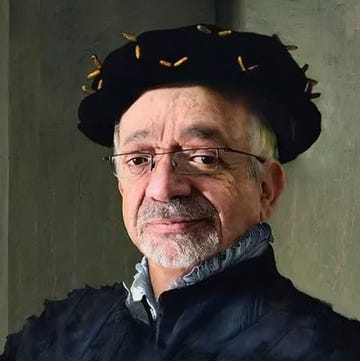I first heard the word blackout when I was a kid in Manchester, England, listening to my grandmother recall the nightly Luftwaffe air raids fueling World War II. Blackout, in that context, was a way of staying hidden, of preventing harm from befalling her and her three kids while my granddad was a soldier in North Africa.
In his second novel, Blackouts, Justin Torres deftly investigates the word’s many connotations: hiding from tormentors, redactions in documents, the ways memory loss can black out personal history, or the violent blacking out (as in: erasing) the existence of those we consider outsiders.
Torres’s debut novel, We the Animals, received widespread critical acclaim, but this new book is on another level. His sensitivity to language and his richly drawn characters are incandescent on the page. “I came to the Palace,” his unnamed narrator, who is referred to as niño, tells us, “because the man I sought kept a room there.” The Palace is in the desert, and the man the narrator is seeking is named Juan Gay; they met while institutionalized in a mental hospital. The narrator was committed at age 17. Now, it’s 10 years later, and he has come to speak with the dying Juan.
Juan wants help with a project. He is hoping that the younger man will “fill in the gaps” of his life story, which exists as a “file folder stuffed with scraps of paper, newspaper clippings, photographs, and scribbled notes.” There is also a research study, two volumes titled Sex Variants: A Study in Homosexual Patterns.
The study is real, published in 1941, and based on multiple interviews with queer subjects. The researcher, Jan Gay, was queer herself, and she never received credit for her work. Throughout the novel, Torres intersperses pages from her book, but redacted. The remaining words offer a different form of truth telling.
Indeed, this revealed language works as a sort of found poetry, redefining language’s purpose. In a profile of one subject, Rose, what remains is so stripped down as to dance along the edge of meaning. “Any description of Rose,” Torres’s version reads, “would be…a…Rose…prolong her vowels…hesitate…describe…a statue…white, translucent skin…make her…a Rubens…paint…her dreams blue eyes…shrewd and penetrating and…low…Rose…is still…a…Rose…a…tangible return.”
The blacked-out pages serve as visual clues to how we tell our own stories, recalling a history where memories have been lost or erased, which means any understanding of the past is a redacted record.
Before Juan takes the narrator down the memory hole, he draws out the young man’s own stories, which begin with a blackout of another variety. While washing dishes, he suffered from a kind of absence seizure, incognizant of the basin overflowing and flooding his landlady’s downstairs apartment. The water damaged irreplaceable items, family snapshots.
The narrator tells Juan about growing up as a gay Puerto Rican man and how his identities were inflection points. Juan calls it the story of a “hoodlum homosexual” (a reference to Jean Genet) and asks whether the memories are not a romantic version of a difficult past.
The problem with telling stories about the past, especially when it is romanticized, is that it can provoke a desire to go back. “Who is it,” the narrator asks, “that likens nostalgia to returning to a familiar street only to find the geography has been tampered with?… It struck me as a warning—not to get lost back there, in the misremembered past, that half-dreamt barrio you can’t recall how to escape.”
We remember the high points, in other words, blacking out the circumstances in which they may have taken place.
The stories gathered in Jan Gay’s study highlight a period—the 1920s and 1930s—when queer culture flourished. World War II brought in its aftermath a suppression of that culture. In photographs and stories, Torres explores the study’s evidence, discovering joyful reminders that “there have been other worlds, and so there will be.” Gay culture did not emerge whole cloth in the wake of Stonewall; it has existed throughout history. Much of the documentation, however, has been erased.
In an endnote, Torres observes that stigmatized people tend to live in a “literarily-defined world.” Recovering that means figuring out what might have been removed by the researcher, or the strategies subjects used in editing their own narratives.
Torres stitches together the parts of his novel to create a whole, but one in which the seams are rough and visible. It’s part of the brilliance of the writing, which in drawing attention to the writer’s craft demonstrates that all stories are spliced together to create meaning. By switching back and forth between the testimony gathered by Jan Gay, her own life, and the memories Juan and the narrator share with each other, Torres makes visible a novelist’s sleight of hand. The result is a mille-feuille, a novel of multiple layers with various flavors on the palate.•
Lorraine Berry is a journalist and an editor who has written for the Los Angeles Times, Literary Hub, the Guardian, and many other publications.













